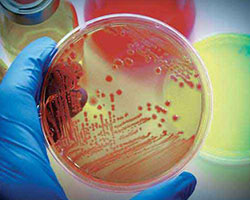
| Report Code: 40265 | Published: July 2019 | Pages: 300+ | Available format: |
| Therapeutic Area(s): | Infectious | Report Type: Indication Pipeline Reports |
Overview
Peanut allergy is a common type of food allergy that can cause severe allergic reaction, which can result in anaphylaxis. Even a small amount of peanut can cause symptoms of allergy in patient. The symptoms include constriction of airways, swelling of throat that makes it difficult to breathe, a severe drop in blood pressure (shock), rapid pulse rate, dizziness, lightheadedness, and loss of consciousness. The allergy happens due to misinterpretation of peanut as a foreign material, and can happen due to direct contact, indirect contact, or inhalation. Risk factors for the allergy include age, family history, other food allergies, and atopic dermatitis. This allergy is more common in children, since the immune system of a child is more susceptible to the allergy.

The diagnosis of the allergy can be done through skin test, in which a small amount of peanut is kept and the skin is pricked. A raised bump followed by procedure is a confirmation of allergy. Additionally, a blood test can diagnose the reaction of immune system to peanut. The treatment of peanut allergy is uncertain, but the use of epinephrine injections can provide a better solution to this problem.
Pipeline Analysis
As of March 2019, the peanut allergy therapeutics pipeline comprised 10+ drugs in different stages of development.
Epidemiology Analysis
The report provides epidemiology forecast of peanut allergy for seven major markets, such as the U.S., Japan, and EU5 countries (the U.K., Germany, France, Italy, and Spain). It covers prevalent population and treated patient population for the period 2016–2028. According to a data published in The Journal of the American Medical Association (JAMA) Network Open in 2019, approximately 1.8% of the total population of the U.S. suffers from peanut allergy.
Competitive Landscape
Some of the key players developing peanut allergy therapeutics are Aimmune Therapeutics Inc., Inimmune, ImmusanT Inc., AllerGenis Inc., DBV Technologies, and AnaptysBio Inc.
Report Insights
Some highlights of the report “Peanut Allergy Therapeutics – Pipeline Analysis 2019, Clinical Trials and Results, Patents, Designations, Collaborations, and Other Developments” have been mentioned below: